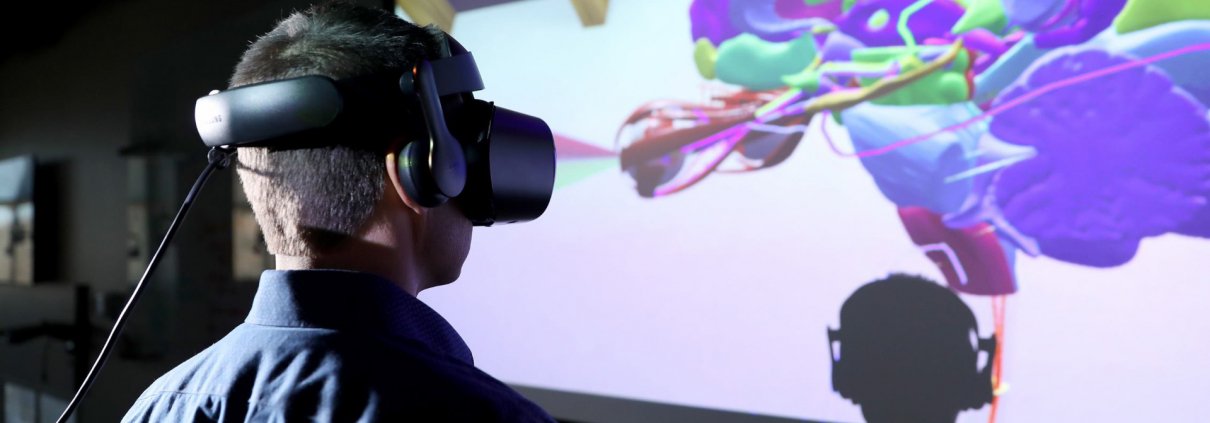OBJECTIVE:
Investigate VR as an effective alternative to in-person cadaveric laboratories. Confirm VR improves student engagement, increases student knowledge acquisition and retention of anatomical spatial relationships.
RESULTS:
- High level of student engagement and satisfaction
- Extensive positive feedback of the program’s design, flexibility and components
- 75% saw utility in VR as a supplemental tool or greater in learning human anatomy
- VR promoted understanding of spatial relationships (87%) and understanding of anatomical systems (80%)
- Students reported an increase in confidence when visualizing in 3D
Colorado State University and Dr. Tod Clapp have built and now operate the largest Virtual Reality Student Education Lab in the world (pictured).




